수의사("How to Decipher Veterinary Code", WDJ 2013년 10월 참조) 또는 개 자체("개 인증 및 직함", 2014년 1월)에 의해 뒤처지지 않기 위해 개 훈련 및 행동 직업도 놀라운 자랑거리입니다. 트레이너 이름 끝에 나타날 수 있는 문자 배열. 어떤 경우에는 이니셜이 상당한 교육과 개 행동 경험을 가진 사람을 식별하지만 다른 일부는 개 훈련 기관의 회원임을 나타내므로 그 문자의 의미를 아는 것이 좋습니다!
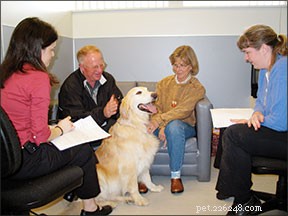
없음이 있다는 사실에 놀랄 수 있습니다. 미국에서 자신을 개 조련사 또는 행동 주의자라고 부르는 사람에 대한 교육, 경험, 훈련, 기술, 인증 또는 라이센스 요구 사항. 없음. 지퍼. 영. 나다. 배관공은 평생 개를 만지거나 본 적이 없더라도 지붕널을 걸고 내일 개 훈련을 시작하기로 결정할 수 있습니다.
다행히도 동물 훈련 및 행동 전문가가 기술과 지식을 향상시킬 수 있는 우수한 교육 기회가 많이 있으며 실제로 많은 사람들이 과정에 참석하고 현장에서 다양한 종류의 인증을 추구합니다. 사실, 자격을 갖추고 교육을 잘 받은 훈련 및 행동 전문가의 수는 1990년대 이후 급격히 증가했습니다.
언론에서는 동물의 행동에 대해 논평하는 사람을 누구나 "동물 행동주의자"라고 지칭하는 경향이 있지만 윤리적 행동 및 교육 전문가 사이에서는 "행동주의자"라는 용어가 해당 분야의 고급 학위를 소지한 사람들에게만 국한되어야 한다는 데 점점 동의하고 있습니다. 행동 및/또는 수의학 및 행동. 그러한 학위가 없고 학위가 있는 행동주의자를 존중하고자 하는 사람들은 "행동 상담사", "행동 상담사" 및 "행동 전문가"와 같은 용어를 사용하여 자신이 하는 일을 설명합니다. 하지만 훈련 및 행동 서비스를 제공하는 많은 사람들이 그러한 예의를 무시합니다.
DACVB: 행동주의자 먹이 사슬의 맨 위에는 "수의 행동주의자"가 있습니다. 이 수의사는 미국 수의 행동 학회(ACVB)에서 설정한 엄격한 자격을 충족하고 2일 간의 행동 수의사 위원회 시험을 통과합니다. 이러한 위원회 인증 전문가를 외교관이라고 합니다. ACVB 외교관 =DACVB. 이 자격증 없이 스스로를 수의 행동학자라고 부르는 사람은 면허 없이 수의 행동의학을 개업하는 것이며 기소될 수 있습니다.
이사회 시험에 합격하는 것 외에도 요구 사항에는 인턴십과 동등한 자격이 포함됩니다. 승인된 대학 프로그램 또는 ACVB에서 멘토링 및 승인한 부적합 교육 프로그램에서 준수하는 레지던트; 감독된 행동 사례 로드(처음 25개의 임상 사례는 멘토가 참석한 상태에서 확인되고, 다음 50건 중 25건은 멘토의 감독 하에 확인되며, 처음 200건의 경우 긴밀한 감독이 필요함); 후보자 자신의 연구를 기반으로 동료 심사 저널에 발표된 과학 논문 저작 그리고 3개의 동료 검토 사례 보고서를 작성합니다.
요구 사항을 감안할 때 전 세계에 100개 미만의 DACVB가 있다는 것을 이해할 수 있습니다. 대부분은 미국에 있고 소수는 캐나다에 있습니다.
CAAB: 다음은 CAAB(공인 응용 동물 행동학자)입니다. CAAB가 되려면 동물 행동 학회(ABS)에서 정한 자격을 충족해야 합니다.
이 타이틀을 획득하는 방법은 두 가지가 있습니다. 첫 번째는 동물 행동에 중점을 둔 생물학 또는 행동 과학 분야의 박사(박사 학위)와 5년의 전문적인 경험이 필요합니다.
두 번째 경로는 수의학 박사 학위와 함께 대학에서 승인한 동물 행동 레지던트에서 2년, 동물 행동에 대한 전문적인 경험 3년이 더 필요합니다.
이 두 번째 경로의 다른 요구 사항은 다음과 같습니다. 문헌, 과학적 원리 및 동물 행동 원리에 대한 철저한 지식 입증 동물 행동 정보에 대한 독창적인 기여 또는 독창적인 해석 제출 임상 동물 행동 환경에서 종과 독립적으로 작업하기 전에 연구원, 연구 조교 또는 인턴으로 공인 응용 동물 행동가와 함께 특정 종과 대화식으로 작업한 상당한 경험의 증거를 보여줍니다. 인증을 신청하기 전에 ABS 연례 회의에 참석하여 기고된 강연이나 포스터를 발표합니다. Associate Certified Applied Animal Behaviorist(다음 참조)의 모든 요구 사항을 충족합니다.
ACAAB: Associate Certified Applied Animal Behaviorist는 다음 단계입니다. "Associate"가 당신을 속이게하지 마십시오. 이 인증 수준에 대한 요구 사항은 여전히 엄격합니다. 첫째, 신청자는 동물 행동에 중점을 둔 생물학 또는 행동 과학의 공인 대학에서 석사 학위를 취득해야 합니다. 학위에는 연구 기반 논문이 포함되어야 합니다. 교과 과정에는 행동학, 동물 행동 및/또는 비교 심리학의 9학기 학점을 포함하여 행동 과학 과정에서 30학기 학점이 포함되어야 합니다. 동물 학습, 컨디셔닝 및/또는 동물 심리학에서 9학기 학점.
다음으로, 후보자는 응용 동물 행동에 대한 최소 2년의 전문 경험에 대한 증거를 제공해야 합니다. 임상 동물 행동 환경에서 종과 독립적으로 작업하기 전에 특정 종(예:연구원, 연구 조교 또는 인증된 응용 동물 행동학자와 협력하는 인턴)과 대화식으로 작업한 상당한 경험의 증거를 보여줍니다. 인증을 신청하기 전에 ABS 연례 회의에 참석하여 기고된 강연이나 포스터를 발표합니다. 또한 위에 나열된 분야에서 신청자의 전문적인 경험을 확인하는 인증된 ABS 회원과 일반 ABS 회원이 각각 한 개씩 최소 3개의 추천서를 제공해야 합니다. 약 50개의 CAAB와 ACAAB가 결합되어 있습니다.
미국 전역에 인증된 행동학자가 100명 미만이므로(많은 사람들이 반려동물과 함께 일하지 않음), 다른 자격을 갖춘 행동 및 훈련 전문가를 찾을 수 없다면 개 개체군은 심각한 서비스를 받지 못할 것입니다. 다행히도 지난 수십 년 동안 애견 훈련사 교육을 강화하기 위해 설립된 여러 조직이 생겨났습니다.
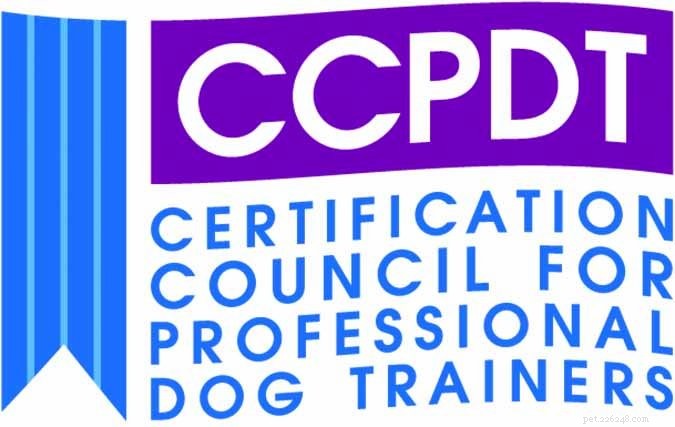
APDT: 개 훈련 분야에서 전문성의 필요성을 인식하고 1991년 영국의 수의 행동학자 Ian Dunbar는 훈련사들이 서로 네트워크를 형성하고 교육 기회를 제공할 수 있는 포럼을 목적으로 애완견 훈련사 협회를 설립했습니다. 최근에 전문 개 조련사 협회로 개명된 APDT는 1993년 플로리다주 올랜도에서 첫 번째 연례 교육 회의를 개최했습니다.
연례 회의는 오늘날까지 계속되고 있으며, 웨비나도 자주 제공됩니다. APDT 자체가 트레이너를 인증하지도 않고 회원들이 반드시 강제 없는 훈련에 전념하지도 않지만 이 조직은 2001년에 CCPDT를 시작했으며(아래 참조) 전 세계적으로 2,000명 이상의 훈련 및 행동 전문가를 인증했습니다. 5,000명 이상의 회원을 보유한 APDT는 세계에서 가장 큰 개 훈련 회원 조직입니다.
AVSAB: AVSAB(American Veterinary Society of Animal Behavior)는 동물의 행동을 이해하는 데 관심을 공유하는 수의사 및 연구 전문가 그룹입니다. 1976년에 설립된 AVSAB은 모든 동물의 삶의 질을 개선하고 동물과 소유자 간의 유대를 강화하기 위해 노력하고 있습니다. 이 조직의 회원 자격은 동물 행동 또는 밀접하게 관련된 분야에서 박사 학위를 소지한 모든 수의사, 수의대 학생 및 비 수의사에게 열려 있습니다.
AVSAB의 회원 자격은 인증이 아니므로 회원의 기술이나 행동 작업의 자격에 대한 진술도 아닙니다.
CCPDT: 전문견 조련사 인증 협의회는 최초의 반려견 조련사 국가 인증 기관입니다. 2001년 CCPDT가 제정될 때까지 이 나라에는 개 조련사에 대한 국가적으로 사용 가능한 인증 절차가 없었습니다. 다른 많은 인증과 달리 CCPDT 테스트는 모니터링되고 테스트 프로세스가 표준화됩니다. CCPDT는 2001년 9월 28일 뉴욕에서 열린 APDT 교육 회의에서 첫 번째 테스트를 실시했습니다.
CCPDT는 회원 조직이 아닙니다. 당신은 인증자가되기 위해 가입하지 않습니다. CCPDT는 인증자가 윤리 강령을 준수하고 행동 및 교육 관행에서 인도적인 계층 구조를 준수할 것을 요구합니다. 현재 3개의 기존 인증 중 하나에 2,500명 이상의 인증자가 있습니다(네 번째 인증은 개발 단계에 있음).
CPDT-KA: 지식 평가를 받은 공인 전문 개 조련사는 종합적인 필기 시험에 합격해야 합니다. 지난 5년 동안 개 훈련에 300시간 이상의 경험이 있다는 확인서를 제출하십시오. 고등학교 졸업장 또는 이에 상응하는 GED가 있어야 합니다. 그리고 3개의 추천서를 제출하십시오(수의사, 개 훈련 고객, 행동 및 훈련 직업 동료). 현재 2,400개 이상의 CPDT-KA가 있습니다.
CPDT-KSA: 인증된 전문 개 조련사, 지식 및 기술 평가는 CPDT-KA 자격을 보유하고 추가적으로 CCPDT가 지정한 4가지 기술을 훈련하는 비디오 기술 시험을 통과해야 합니다. 후보자와 함께 또는 이전에 교육을 받았습니다. 약 120개의 CPDT-KSA가 있습니다.
CBCC-KA: 공인 행동 컨설턴트(Canine, Knowledge Assessed)는 종합적인 필기 시험에 합격해야 합니다. 최근 5년간 공포, 공포증, 강박행동, 불안, 공격성에 대한 반려견 행동 상담 500시간 기록 제출 또는 최근 3년 이내에 공포, 공포증, 강박 행동, 불안 및 공격성에 대한 개 행동 컨설팅에서 300시간 동안 심리학, 사회 사업, 생물 과학 분야 또는 생명 과학 분야에서 석사 학위 또는 박사 학위를 소지한 자 5개의 참조 자료를 제출하십시오. 약 75개의 CBCC-KA가 있습니다.
IAABC: 국제 동물 행동 컨설턴트 협회(International Association of Animal Behavior Consultants)는 반려동물 행동 문제로 대중을 지원하는 관행이 수의사, 동물 조련사, 동물 보호소 직원, 학자 등 다양한 전문가를 포함하는 성장하는 분야라는 것을 인식하여 2004년에 설립되었습니다. 앞서 언급한 범주 중 하나에 항상 잘 맞지 않는 실무 컨설턴트입니다.
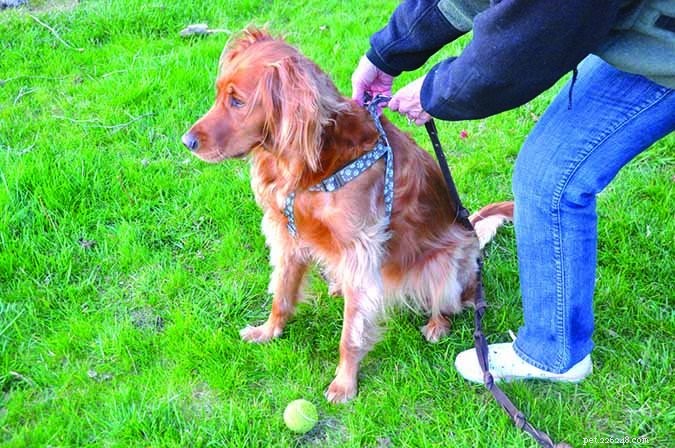
IAABC의 목표는 조언이 필요한 애완 동물 소유자에게 리소스를 제공하는 동시에 반려 동물 행동 컨설팅의 관행을 표준화하고 지원하는 것입니다. 이 조직에는 전 세계적으로 거의 400명의 회원이 있습니다(모든 회원이 개 행동 컨설턴트는 아님). IAABC 회원은 혐오 자극의 사용을 최소화하고 강화물의 효과적인 사용을 최대화하여 동물 행동을 수정하기 위해 노력합니다. LIMA(최소 침해 및 최소 혐오) 원칙이 일반적으로 사용됩니다. 인증을 받으려면 IAABC의 회원이어야 합니다. IAABC 명단에는 약 375명의 Certified 및 Associate Certified 회원이 있습니다.
CDBC: IAACP는 다양한 종과 함께 행동하는 전문가를 위한 인증을 제공합니다. 공인 개 행동 컨설턴트는 다음을 수행해야 합니다. 고객이 참석한 동물 행동 컨설팅에서 최소 3년 500시간의 경험을 문서화해야 합니다. 최소 400시간의 관련 교과 과정, 세미나 및 멘토링을 완료합니다. 3개의 서면 사례 연구를 제출합니다. 네 가지 사례 시나리오에 대한 서면 토론을 제출합니다. 용어, 기술, 행동 평가 및 역사 기록에 관한 질문에 답합니다. 최소 교육 수준의 고등학교 졸업장 또는 GED를 소지하고 있습니다. Veterinary Behaviorists, ACAAB 및 CAAB는 3개의 해당 사례 연구와 신청비를 제출하면 회원 자격이 부여됩니다.
IACP: 국제 개 전문가 협회(International Association of Canine Professionals)는 개 전문가들 사이에서 최고 수준의 전문가 및 비즈니스 관행을 개발하고 촉진하기 위해 1999년에 설립되었습니다. IACP는 세 가지 인증을 제공합니다. 인증을 받으려면 IACP의 회원이어야 합니다. IACP는 약 65명의 인증 회원을 보유하고 있습니다(모든 IACP 회원이 인증을 받은 것은 아님).
CDT: IACP의 전문 회원 및 회원 자격이 6개월 이상이고 전문 조련사 경력이 2년 이상인 준회원은 공인 애견 조련사 시험에 응시할 수 있습니다. CDT 시험은 일반 대중에게 전문성의 "기본 수준"을 구성하는 기대 수준을 제공하기 위해 지원자의 기본 기술 수준을 테스트하기 위한 것입니다. 응시자는 과거 고객이 작성한 세 가지 평가 양식을 제출해야 합니다. 세 개의 참조 편지; 교육에 사용된 유인물 사본, 샘플 섭취/등록 양식; 그리고 세 가지 사례 연구.
CDTA: Certified Dog Trainer – Advanced(CDTA) 시험의 목적은 응시자의 높은 수준의 능력을 검증하는 것입니다. CDTA는 최소 1년 동안 CDT 타이틀을 보유하고 최소 5년의 전문 교육 경험이 있어야 합니다. CDTA 후보자는 IACP-CDTA 평가자 앞에서 3마리의 개를 훈련시키거나(또한 훈련 비디오를 DVD로 녹화하도록 규정을 마련해야 함) 평가자가 참석하지 않고 3마리의 개를 훈련시키는 자신의 비디오를 제시하고 DVD를 IACP에 제출해야 합니다. 평가를 위해.
PDTI: PDTI(Professional Dog Training Instructor) 후보자는 1년 동안 CDT 타이틀을 보유하고 최근 5년 이내에 그룹 또는 개인 수업의 헤드 또는 리드 도그 트레이너로 최소 250시간의 교육을 이수해야 합니다. 이 시험은 사람들에게 개 훈련을 가르치는 것과 관련된 신청자의 지식, 경험 및 교육 기술을 테스트합니다. 후보자는 또한 3장의 추천서를 제출해야 합니다. 교육에 사용되는 양식, 유인물, 워크북, 숙제 시트 및 읽기 목록; 후보자가 고객에게 지시하는 비디오; 12개의 에세이 질문에 대한 답변입니다.
나도이: The National Association of Dog Obedience Instructors was founded in 1965 when a small group of highly experienced dog trainers gathered together and resolved to promote modern, humane training methods, and at the same time elevate the standards of the dog obedience instructing profession. To accomplish these goals, it was decided that members of the organization should be designated as having attained certain skills and knowledge of dog training and obedience instructing.
NADOI Certified membership requirements include:at least five years’ experience in dog obedience training; at least two years as a full-charge instructor; past experience working with a minimum of 100 different dogs; submission of training hours (group instructors must have taught at least 104 class hours; private instructors 288 hours). Also, each applicant must submit a written essay that enables evaluation of his knowledge of general dog behavior, ability to deal with specific training problems, knowledge and use of training methods, and teaching and training skills.
PPG: The Pet Professional Guild is a membership business league for individuals and professional pet industry businesses with the common goal of furthering the public’s education and awareness of force-free dog training and pet care methods, techniques, and state of research in dog training and pet care, and promoting the common interest of spreading force-free dog training and pet care methods to the pet industry.
The PPG provides professional registry, representation, and education to force-free pet care providers and the public, with an emphasis on building collaboration among force-free pet trainers and professional pet care providers, thereby improving the business conditions and promoting the common interests of force-free professionals. The PPG does not offer certifications.
TDF: The Truly Dog Friendly group is an online list of more than 350 training and behavior professionals who are committed to using dog-friendly methods. TDF defines dog-friendly methods as reward-based rather than force-based. Dog-friendly trainers do not use shock collars (e-collars), nor do they use coercion, intimidation, or pain. Instead, they teach with a gentle, fair approach so that dogs truly will enjoy learning and form a trusting bond with their owners. TDF does not certify trainers.
There are many training schools that offer certificate courses. While a student who completes one or more courses from these schools may be granted a “certification” title, this type of certification means only that the student passed the course. While some of the courses are very comprehensive, true professional certification tests a broad body of knowledge, not just the knowledge taught in a specific course.
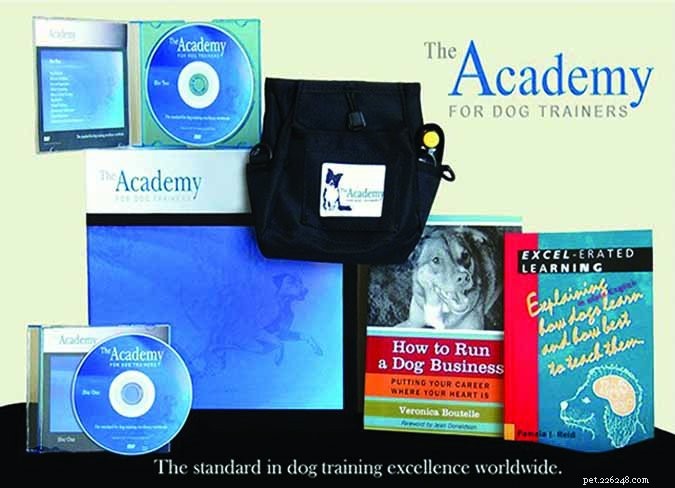
ADT: Jean Donaldson’s Academy for Dog Trainers aims to further aversive-free, science-based dog training by making an academically rigorous program available to anyone, no matter where they live, at an affordable cost. This is a comprehensive on-line program that can typically be completed in one to two years.
CASI: The Companion Animal Sciences Institute provides advanced, science-based professional development education in the animal behavior, training, behavior change programming, fitness, and nutrition in an online format. It is the position of CASI that animal friendly, positive reinforcement-based methods are the most efficient and effective, and least intrusive and risk-laden methods to use in animal training and behavior, and most conducive to facilitating the human-animal bond. Certificate credentials offered by CASI include:
Cert. PDTST: The Certificate of Professional Dog Training Science and Technology program is a rigorous program that helps students upgrade and develop skills for a career in dog training. Coursework covers the principles of learning and technology of dog training, with hands-on skill practice.
Cert. SRW: The Diploma of Shelter and Rescue Work certificate program addresses many aspects of working in the dog sheltering and rescue environment. Coursework explores the principles of behavior, behavioral assessment strategies within the shelter environment, training and behavior modification techniques for shelter and rescue environments, disease risk management, environmental enrichment and emotional health management of dogs in shelters, the adoption process itself, and shelter and rescue organization operation.
Dip. ABST: The Diploma of Animal Behavior Science and Technology program addresses key topics in behavior modification and management protocols, including the principles of behavior; tactics, strategies, and procedures in non-coercive animal training; functional assessment; behavior modification protocols; professional activities; and professional ethics. Students carry out hands-on training with their own companion animal and engage in a problem behavior resolution project.
KPACTP: The Karen Pryor Academy (KPA) Dog Trainer Professional program takes an innovative approach to developing and supporting outstanding positive reinforcement trainers who teach the general public. Graduates of the academy are Karen Pryor Academy Certified Training Partners (KPACTP). The six-month course combines online learning with hands-on teaching from experienced teachers in the field.
NK9SDT: In 1981 the National K-9 Learning Center established its School for Dog Trainers (NK9SDT), with the mission of offering interested individuals the skills and knowledge to pursue careers within the field of professional dog training. The school uses what it calls a “balanced” approach to training, meaning that the tools and methods used are not necessarily based in positive reinforcement.
CPT: Certified Professional Trainers are graduates of the NK9SDT’s six-week Master Trainer course.
PPAWS: Peaceable Paws (PPAWS), launched in 1996, is my own training business and trainer academy, with a mission to foster harmony between the human and non-human animals of our world. PPaws Academies are intensive, hands-on, six-day courses; graduates of multiple academies are PMCTs (Pat Miller Certified Trainers). The Peaceable Paws Academy has graduated more than 300 trainers since its inception. All PMCTs commit to using force-free methods. There are three levels of certification:PMCT1 through PMCT3.
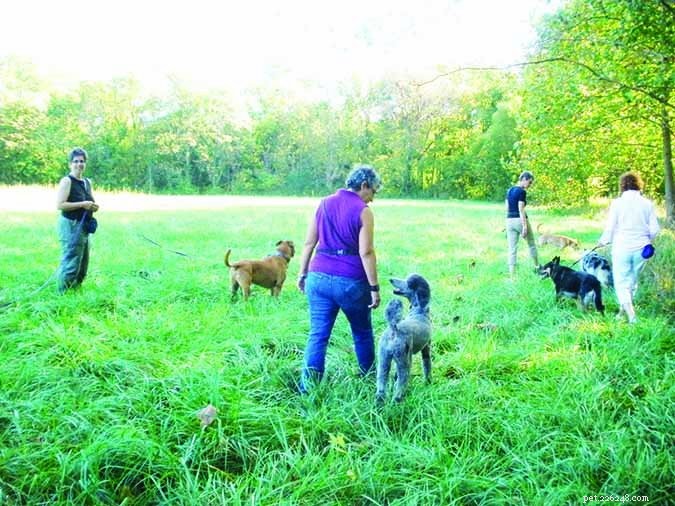
TRS: The Tom Rose School, in business for 40 years, offers intensive residential programs and course certifications that cover everything from basic obedience to canine competition, guard dog, and service dog training. The school uses a “balanced” approach to training, meaning the tools and methods used are not restricted to those based in positive reinforcement. TRS offers several courses with certifications for graduates:a 16-week Associate Dog Trainer (ADT) course; Professional Dog Trainer (PDT) program, which has the same length and content as the ADT, but with standards set higher; a 12-week Master Dog Trainer (MDT); and Advanced Master Dog Trainer (AMDT) course, which is available by invitation only.
VSPDT: Victoria Stilwell Positively Dog Training is a network of professional dog trainers committed to promoting positive reinforcement methodologies. VSPDT doesn’t currently offer a dog trainer school, but has a licensing process for currently practicing professional dog trainers who meet certain criteria and qualifications, including employing only positive reinforcement dog training; avoiding dominance-based alpha-hierarchy methodologies; and undergoing a dog training evaluation by Victoria and her team.
This is by no means a complete list of the alphabet jungle that comprises the world of dog behavior and training; there are undoubtedly more organizations that offer education and/or credentialing for trainers. Just keep in mind that, as in any line of work, not every graduate of a particular program is equally skilled. The letters they choose to put behind their name can give you a rough idea of how much and what kind of education they’ve had, that’s all.
If you are looking for a training or behavior consultant to help you with your dog, you still have to use due diligence:watch the person work with dogs and teach classes, ask for references, etc., the way you would research anyone who you will allow to work with your dog, whether she bears an impressive set of letters behind her name or not.
Please Note: 전체 개 저널 supports training and behavior modification methods that follow science-based positive reinforcement protocols. Not all of the programs discussed in this article meet that standard.
Pat Miller, CBCC-KA, CPDT-KA는 WDJ의 교육 편집자입니다. 그녀는 Peaceable Paws 훈련 센터가 있는 메릴랜드주 페어플레이에 거주하며, 그곳에서 훈련사를 위한 개 훈련 수업과 과정을 제공합니다. Pat is also author of many books on positive training, including 개를 양육하는 방법; From Homeless to Homeward Bound.

효과의 법칙에 대해 가르쳐준 Edward Thorndike(1874 – 1949)에게 감사드립니다. 행동주의를 연구하는 동안 그는 행동의 결과로 행동이 변한다는 효과의 법칙을 관찰하고 설명했습니다. Boundless.com에는 효과의 법칙에 대한 간결한 설명이 있습니다. 효과의 법칙은 특정 상황에서 만족스러운 효과를 내는 반응이 그 상황에서 다시 일어날 가능성이 더 높아지고, 불쾌한 효과를 일으키는 반응이 그 상황에서 다시 일어날 가능성이 낮아진다는 것입니다. Thorndike는 배고픈 고양이를 퍼즐 상자에 넣고 그들의 행동을

전문 트레이너로서 저는 최근 강아지 시즌의 한가운데에 있습니다. 제가 소속되어 있는 훈련소는 최근 강아지반이 대기자로 꽉 찼습니다. 필연적으로 매주 적어도 한 명의 화난 주인은 “오, 이런! 강아지들 너무 일해요!” 그녀가 압도된 몸을 의자에 눕히자, 강아지는 목줄의 끝에서 산만하게 춤을 추고, 동료 주인들은 한숨을 쉬며 동의하며 고개를 끄덕입니다. 예, 강아지 또는 모든 개를 키우고 훈련시키는 데는 많은 노력이 필요하지만 압도적으로 느낄 필요는 없습니다. 적어도 대부분의 경우는 아닙니다! 알면 알수록 쉬워집니다. 개를 키우고 함